Porsche’s history stretches back some 70 years. In those seven decades, it has made many special cars and the company keeps its past well documented via a stunning collection of machines. Many are displayed at the Porsche Museum in Zuffenhausen, Stuttgart, in the heart of Porsche central. But there are only so many cars that can be shown at one time, and so to store the ‘overflow’, Porsche has a storage facility not too far away. The building is not branded and it’s not something the public can access, only the special few. So we’re not sure why they let us in, but what a treasure trove.
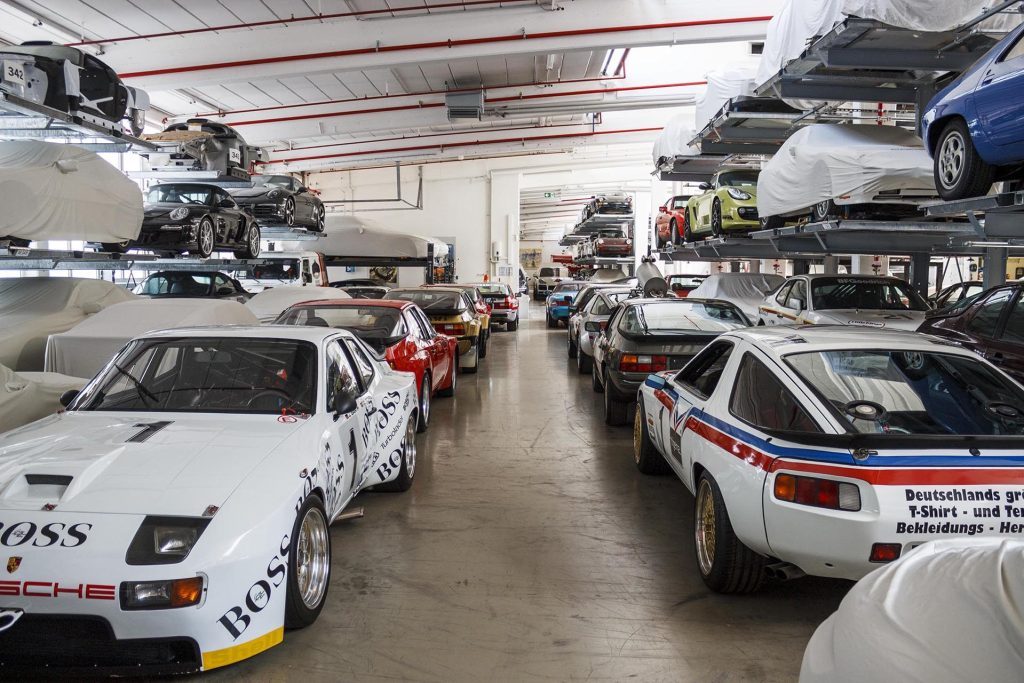
Walking in we were greeted by a line-up of race cars we’d recently seen at the Goodwood festival (top image), all awaiting a once over in the service bay. These are just a few of the 350 or so cars stored here. Porsche has about 730 in total which it rotates through the museum while others will be out on display around the world or used at motor festivals. Amongst the collection are production cars (usually pre-production units), racers, development mules and concept cars. One of the first prototypes we clamp eyes on is the Carrera GT, boxed up and stacked next to a 906 racer. Space is at a premium here, with cars jammed everywhere and stored in racks.
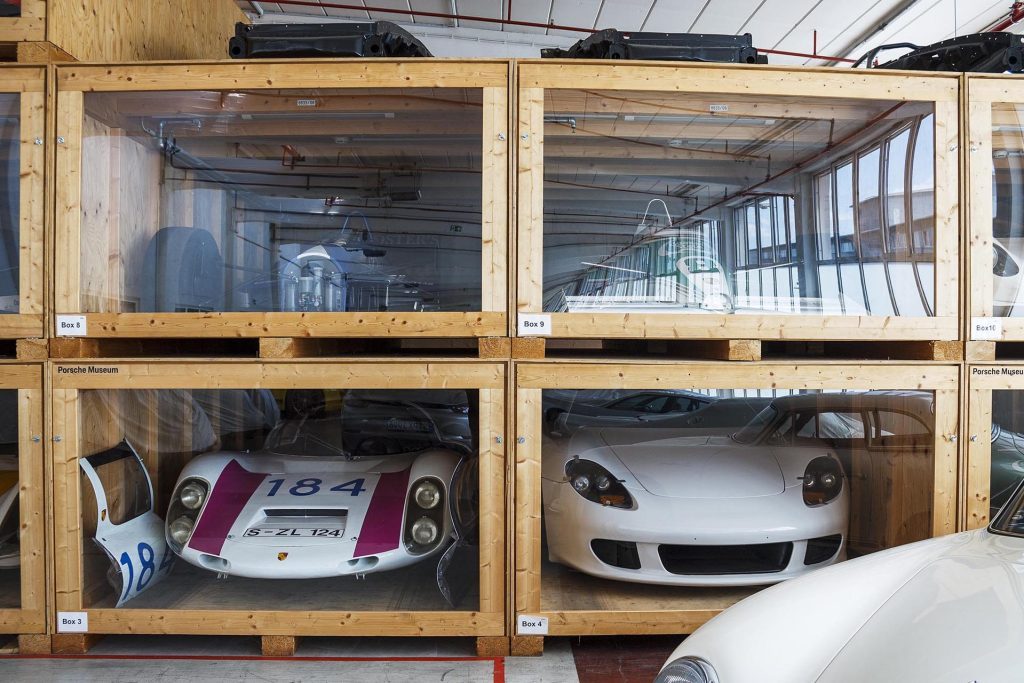
There are a few questionable prototypes lurking about, like the Cayenne cabriolet, a styling concept that we’re glad never saw the light of day. It’s more of a glorified Targa while the rear end has a slightly different design either side, neither appealing, but it’s a cost-efficient way for the design department to showcase two styling directions.
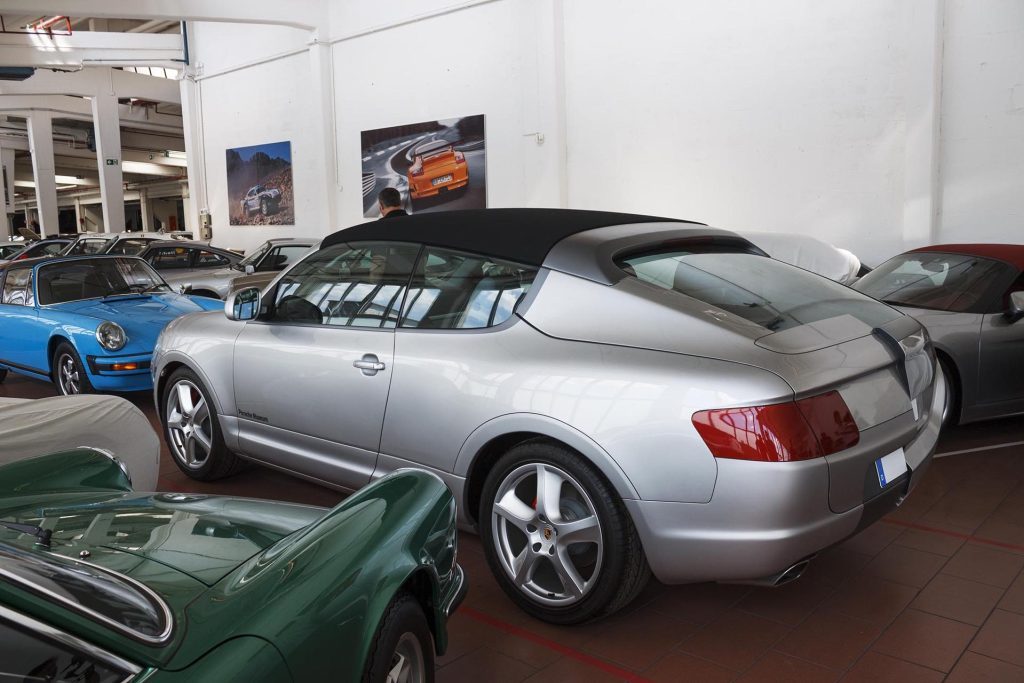
There are some unassuming yet intriguing cars inside. Parked between two 930s, a silver 1974 Carrera could easily be overlooked but it’s a significant car, in fact the first 911 turbo. It was a 70th birthday present for Louise Piech, Ferry Porsche’s sister. It used a standard, narrow Carrera body and is devoid of any Turbo badging under the whaletail. While there is no intercooler, the flat six churns out around 190kW. The interior is outfitted in tartan trim, the theme continued on the Porsche script along the bottom of the doors. The windscreen and side windows are also untinted, as Louise was an artist and liked to sit and paint inside the car, atop alpine passes.
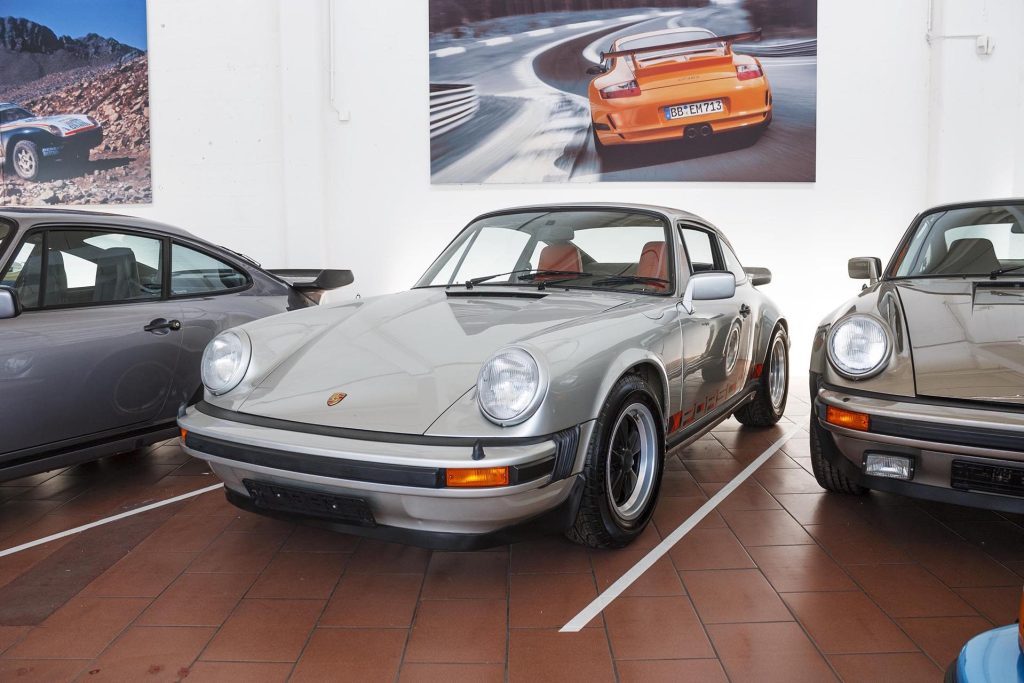
Waiting in a service bay is the 953 from 1984, which won the Paris Dakar on its first attempt. Based on a G Series Carrera, the 3.2-litre was detuned to handle poor African fuel quality, while the body and running gear were beefed up to handle the savage conditions. It was one of the first 4×4 911s, using a precursor to the 959’s AWD system. This had a 31:69 front to rear torque distribution with a manually locking centre diff. Porsche gave it 270mm of suspension travel and fitted the front end with a wishbone arrangement and twin shockers while it had two fuel tanks with a combined capacity of 270L.
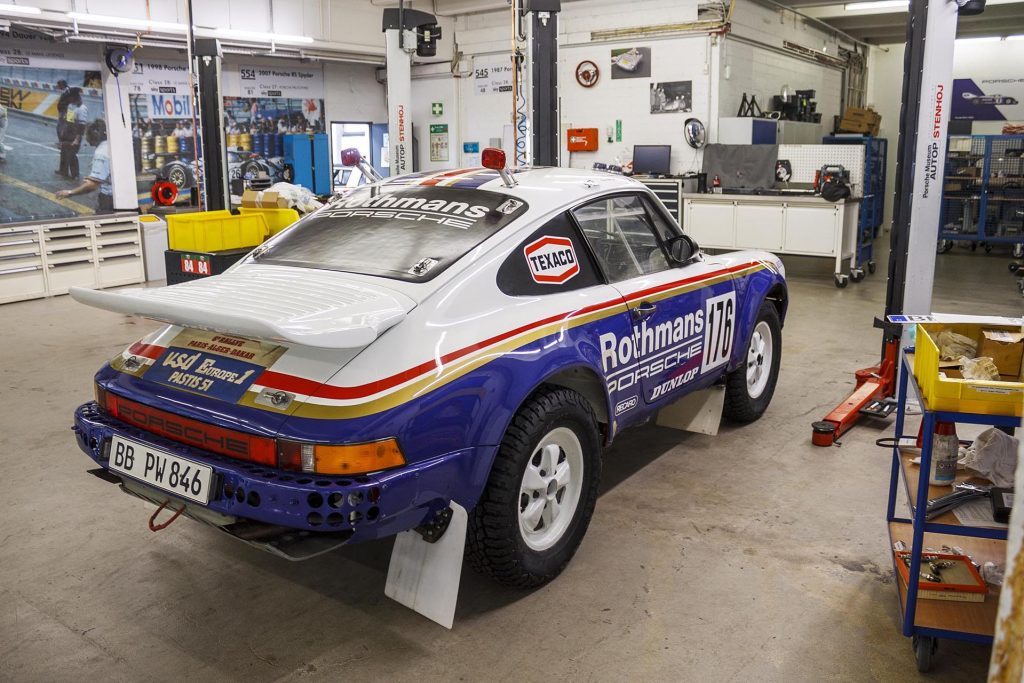
Porsche will likely lean on this heritage when it releases a jacked-up 911 to the public, rumoured to be coming later this year. The initial concept car for this is parked up here alongside two 959 Dakar cars, including the winning entry from 1986. Unlike the 1985 959 Dakar, which was largely a reskinned 953, the 1986 cars featured a version of the road car’s four-mode, electronic AWD system and the new sequential twin-turbo flat six with water cooled heads. Three were made, Porsche closing out a 1-2 finish in the Desert epic.
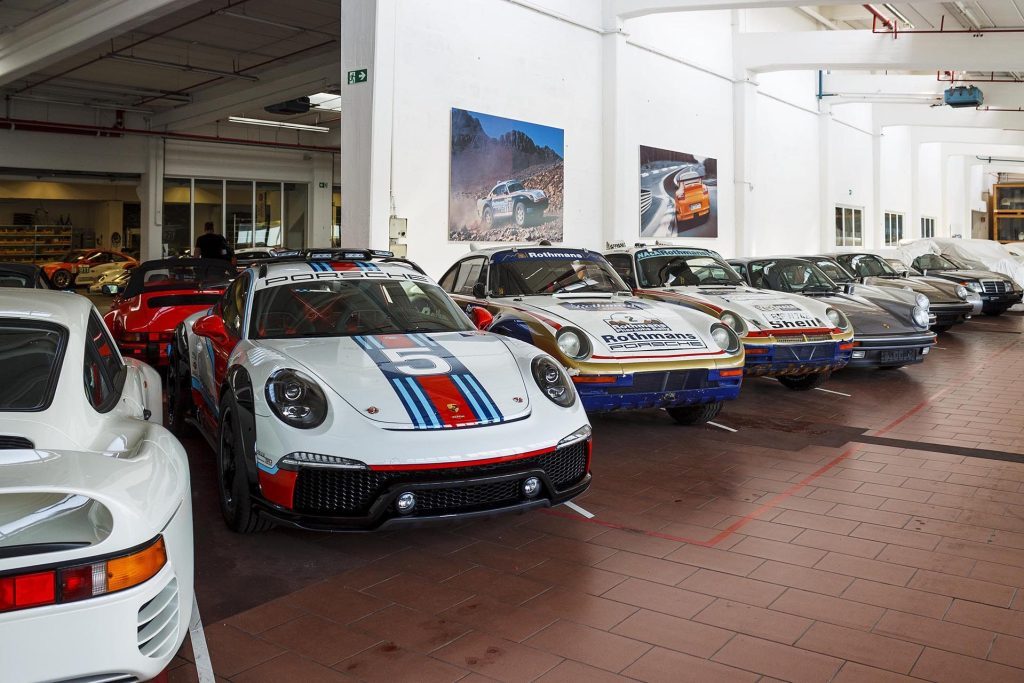
Hanging up in the racks and scattered about the place under car covers are wondrous concepts, like the 989, a stretched 911 with four doors, its development stymied by financial woes in 1992. While they still had plenty of funds, Porsche dabbled with many working prototypes like rear-engined 924 and 928s and the 965, conceived as a cheaper successor to the 959 packing a watercooled, Audi-sourced V8 in the tail.
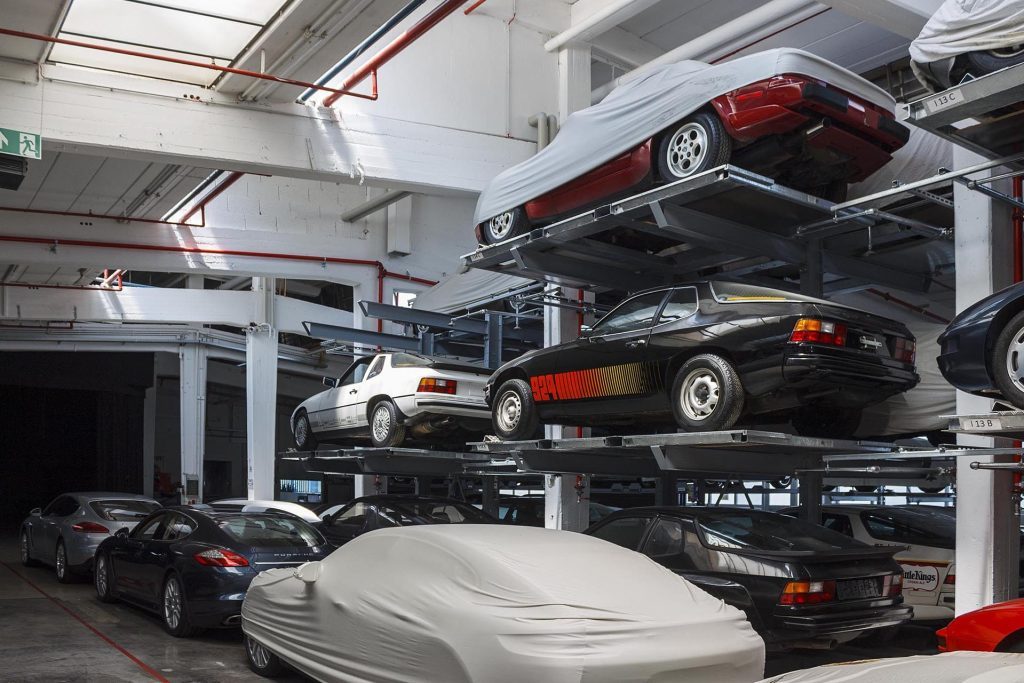
There is a prototype for the Boxster amongst the collection, Porsche using a modified 964 targa to keep the development of its new mid-engined roadster secret. Other significant prototypes there included the first Taycan and concept electric Boxster and Cayman models. There’s a 928 with a four-cylinder, an early experiment in downsizing while another oddity is the 928 tyre tester. This was only recently retired and was used to measure tyre-generated road noise. The various resonators, grilles and radiators are used to remove or muffle as much noise from the car so the engineers can measure tyre-related din.
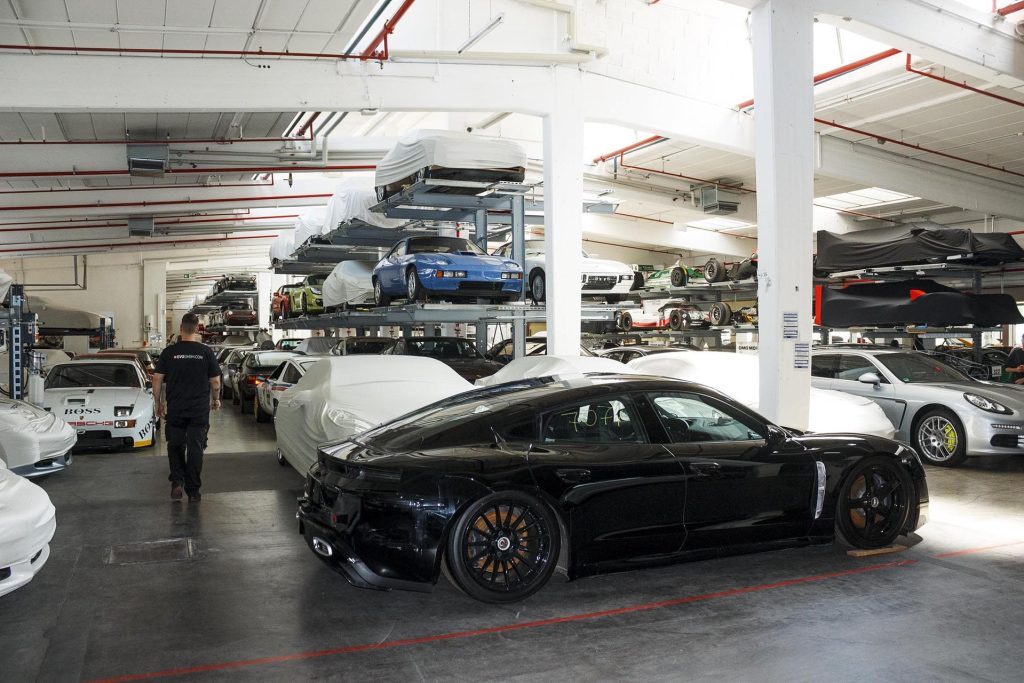
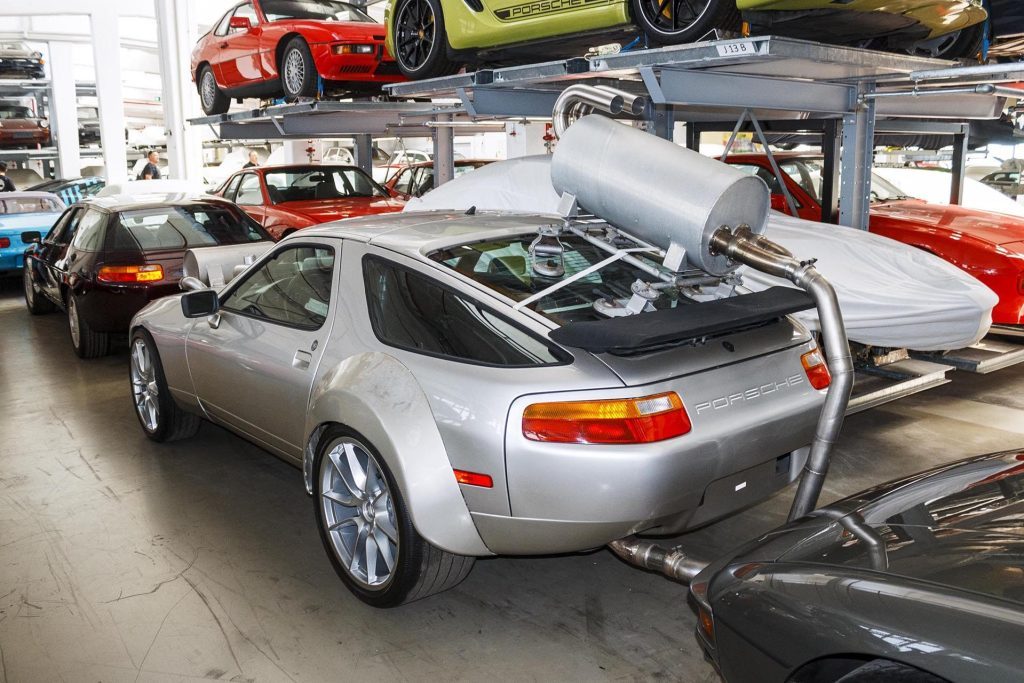
Amongst a gaggle of racers is the stillborn LMP1 car from the late nineties with its carbon tub and V10 engine. While the project was shelved, Porsche managed to recycle the V10 in the Carrera GT road car, and you’d imagine some of the learnings from the chassis went into the RS Spyder, which looks very similar.
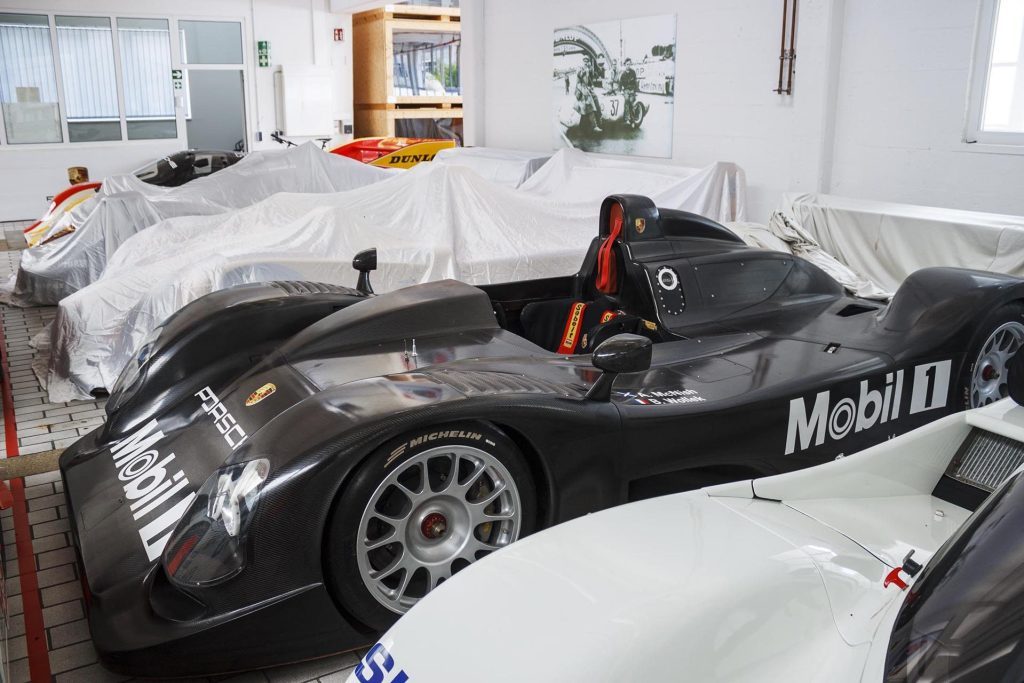
The red and yellow 962C looks brand new, having been restored recently to its original 1987 configuration when Hans Stuck won the Supersprint world title. The 962C is 120mm longer in the wheelbase than the earlier car, putting the driver’s feet behind the front axle line. It carried on the winning ways of the 956, the first Porsche sports car with an aluminium monocoque chassis and ground effects aerodynamics.
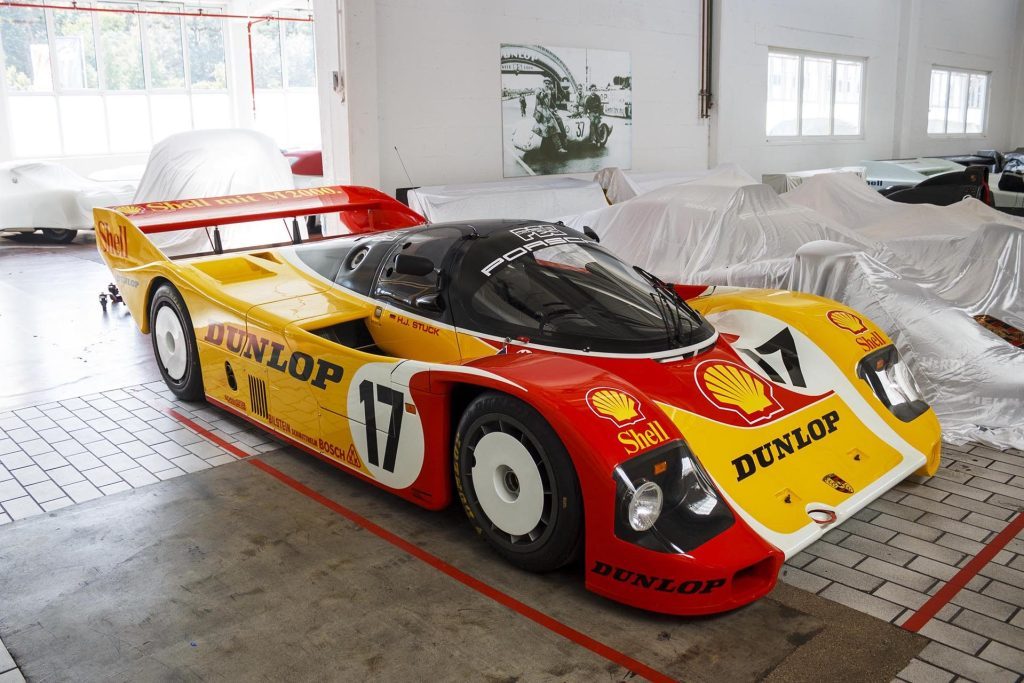
There are a few Carrera Cup cars spread about as well. What is now the longest running single-make race series ever debuted in 1990 in Belgium. The first cars were based on the 964 Carrera 2 with around 265hp. Set-up tweaks were minimal and the series produced close racing with the usual Porsche reliability. A Cup car would win NZ’s Wellington Street race in the 90s, and there are still a few of these racing here 30 years on.
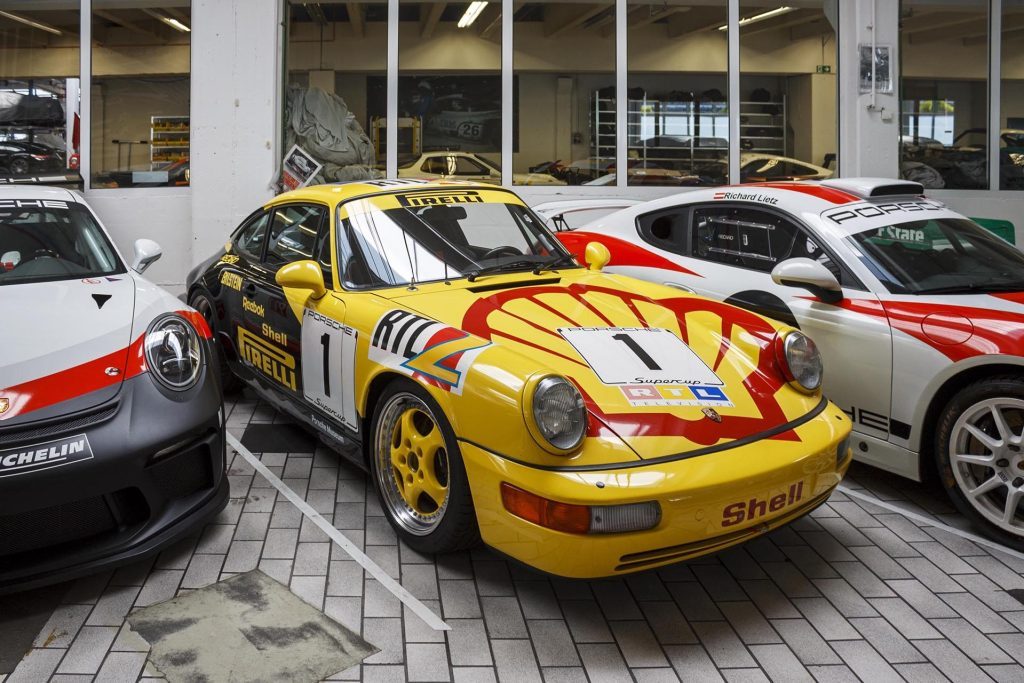
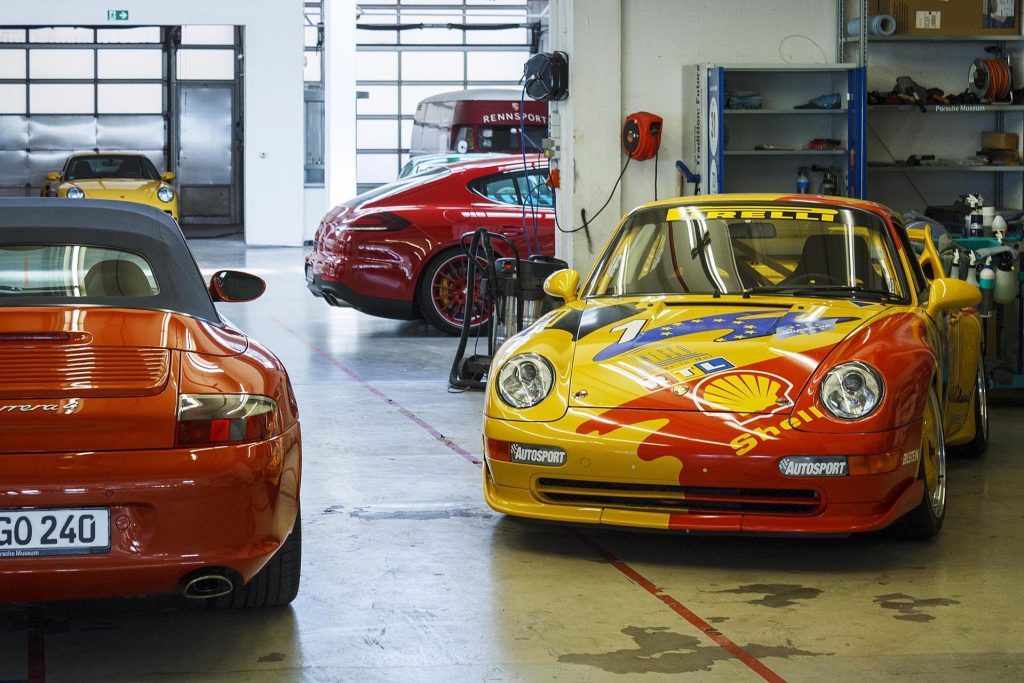
There is a great horde of GT cars in storage. Porsche has been rolling them out steadily since the 996 GT3 and prized among them is the GT1 Evo from 1997. This road-going version of the race car is one of only 21 made. Running from 1996 to 1998, the GT1 was the first mid-engined 911 using a twin-turbo 3.2-litre flat six making 400kW and 600Nm. The model run concluded with an overall victory at Le Mans in 1998.
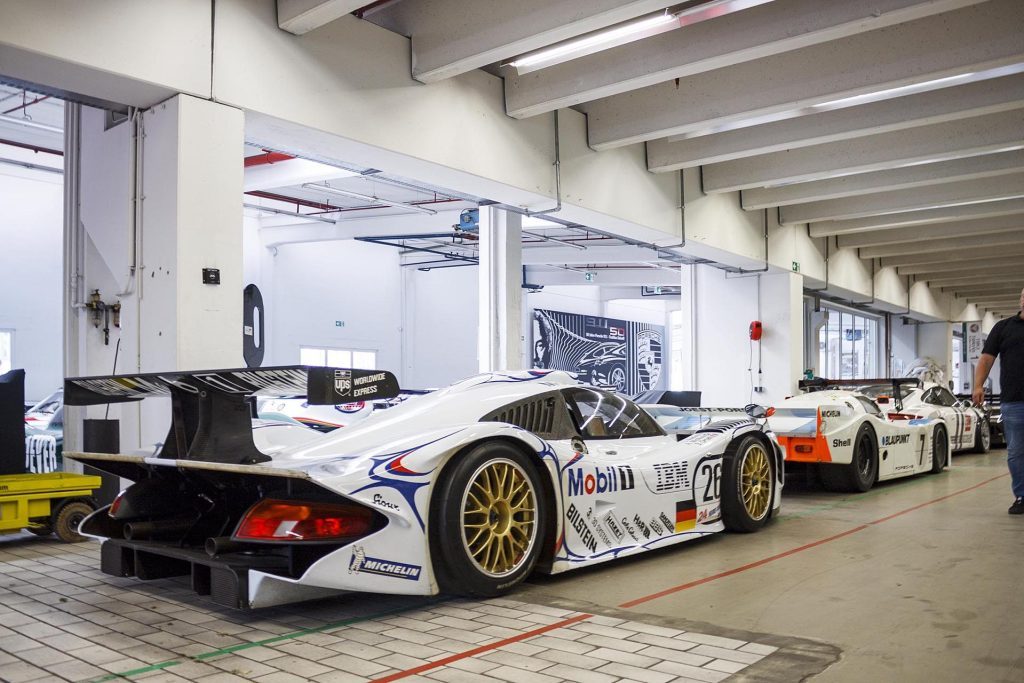
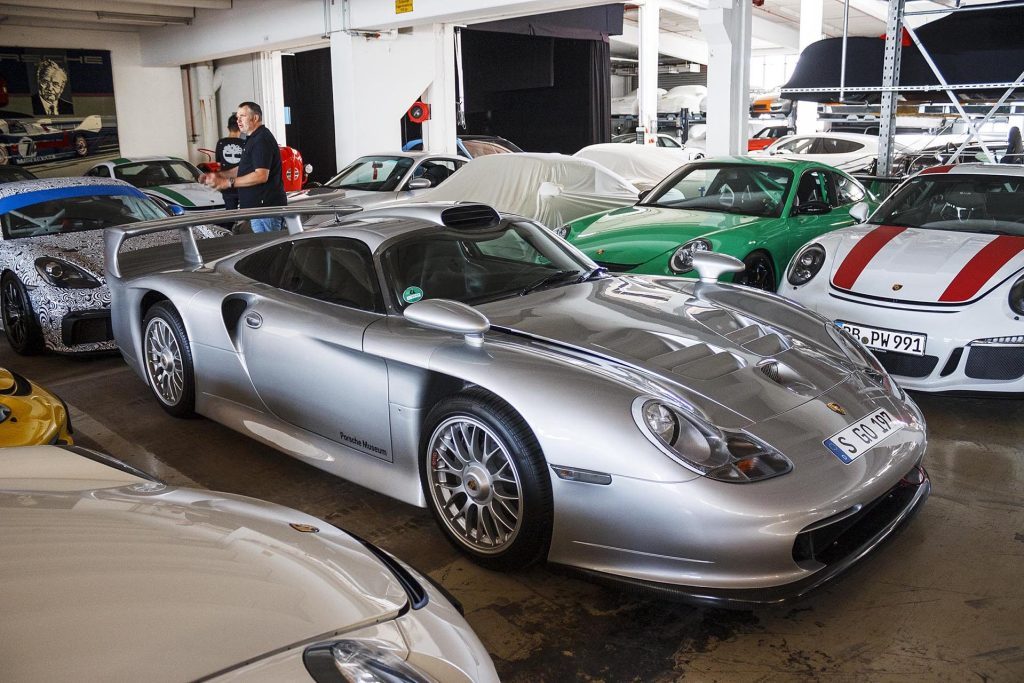
Another wild 911-based racer is the 935/78, or Moby Dick (below left), named after its whale-like dimensions. Porsche took advantage of the 1977 regulations to drastically improve the aeros of the 935, hence the long tail and the big wings. With a 620kW development of the 3.2-litre engine, it managed 366km/h at Le Mans but an oil leak caused it to drop off the pace and it finished eighth. Porsche recently tapped the Moby Dick folklore with a remake and the pre-production car, based on the GT2, is now stored here (below right).
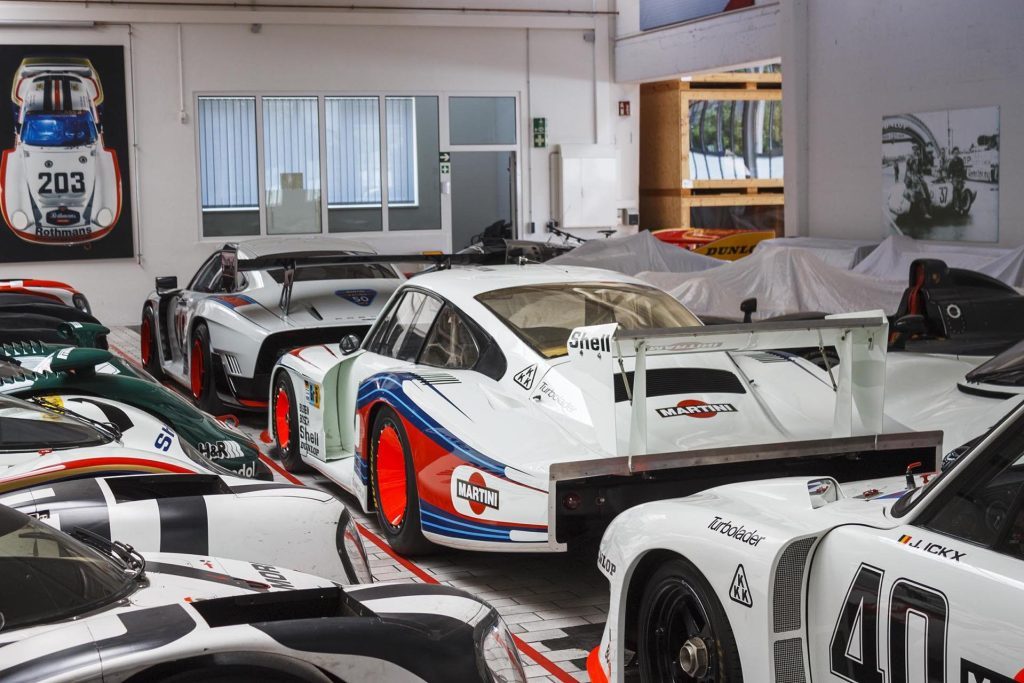
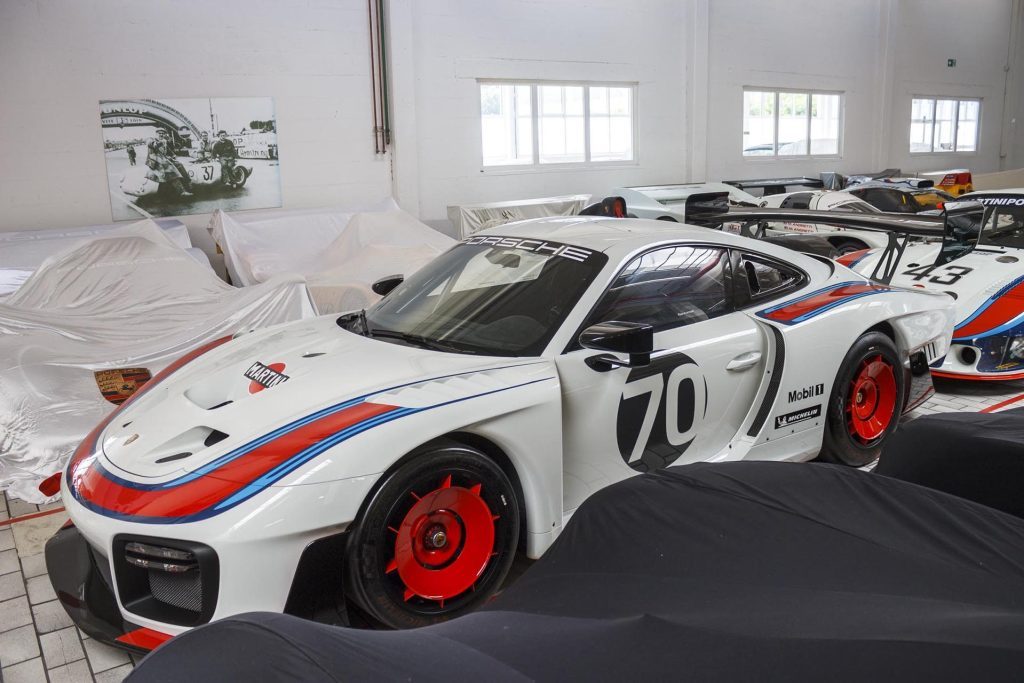
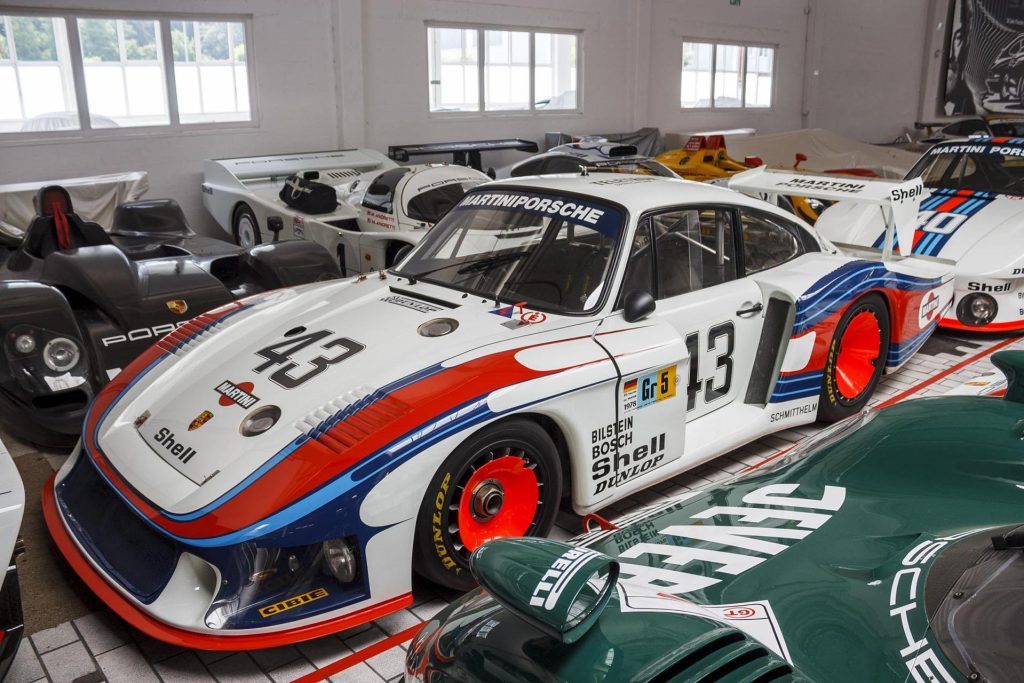
More than 140 of the cars are registered for the road and there are examples from all the generations, from the 550 Spyder through to modern GT cars. This 550 (first image in slideshow below) was driven by Hans Herrmann to a class victory at the 1954 Carrera Panamericana. The 1100cc, 550kg Porsche came in third overall behind a pair of V12 Ferraris, covering the 3073km race distance with an average speed of 156km/h.


